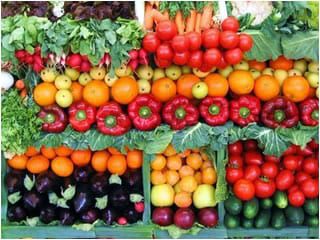Schools Teaching Organic Gardening
In this article, we will look into the movement that is transforming the nation’s schools, the “Local Food Movement” via school gardens. Americans are facing epidemic levels of childhood onset of diabetes, a disease which in many of these children is preventable. Local schools are implementing gardens which allow for hands-on-learning in a variety of educational subjects (science, math, history, economics), in addition to exposing children to a concept of where their food comes from, how it is grown and what different fruits and vegetables taste like. School gardens are a fun way to expand student interest and involvement in their own education and their own long-term health care.
Why epidemic levels of diabetes and obesity?


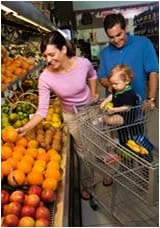
We are now in an age where the majority of the population does not grow any of their own food on their own farms or in their own backyards. The majority of food is purchased either at a grocery store, “fast food” chains, convenience stores or restaurants. The dilemma with purchasing and consuming food from these places is much of the food purchased needs to be transported long distances to its end location. In order for that to be achieved, the food must be preserved so it doesn’t rot or spoil in transport. Preservatives are therefore used to allow for transportation, and it is the preservatives which are creating many health problems including diabetes, high blood pressure, and coronary disease. Processed food is another concern for our children’s health. Processed food essentially means food that has been altered from its original state and therefore contains preservatives. Most of our food processing is derived from corn, which is a high source of sugar. High fructose corn syrup is made by changing (glucose) into fructose (another form of sugar). This ingredient extends the shelf life of processed food and is cheaper than sugar, which is why it is the “preservative of choice” for the food industry. Cheap and sweet. The fundamental issue with consuming high fructose corn syrup, one of the most popular preservatives, is that these foods are high in calories and low in nutritional value. Regularly including processed foods and products in your diet is promoting obesity in our society — which, in turn, creates conditions such as type 2 diabetes, high blood pressure, and coronary artery disease. So how do we reverse the effects? How do we get healthy again? There is a very simple solution to this issue: BUY ORGANIC – GROW ORGANIC – TEACH OURSELVES AND OUR YOUTH ABOUT FOOD
Schools join in the local food movement
Schools around the nation have already started to take action. They are creating school gardens which are an example of the Local Foods Movement.
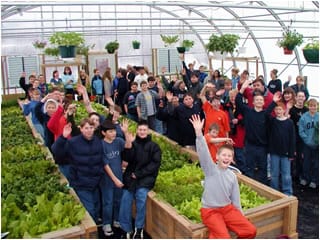
People who participate in the “local foods movement” believe in purchasing foods from local farmers markets, grocery cooperatives, and community supported agriculture co-ops within a certain distance of their homes. The most frequently chosen number is within 100 miles. Schools are taking this to a whole new level by not only purchasing from local farmers but also by placing a garden on site that provides food for the cafeterias. By participating in the local foods movement, schools and individuals are telling the food production industry in America, “We will not accept food that is nutritionally void anymore. We demand healthy food. We are demanding it by purchasing from local farmers who do not contaminate the food we eat with pesticides and chemicals which are making us sick. We will not buy and consume foods that have been genetically modified, or eat animals that have been pumped up with steroids, antibiotics, and chemicals that I will, in turn, consume and will harm my body.”

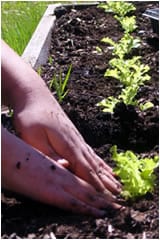
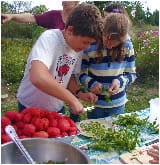
Industry follows the money
The truth of the matter is that food is an industry, and the industry follows the money. If we put our money into locally grown organic markets, then prices will drop, and the food industry will be forced to stop their current ways of altering our food. Healthy food will again be common place. We will have healthier bodies and in turn healthier minds for learning. Because of parents’ concerns, many school districts now have to follow new stricter eating guidelines for lunch menus which are becoming state mandates. These same districts have also been suffering from budget cuts. What these districts are discovering is that choosing local food eliminates lots of costs. Local food is cheaper because of lower overhead costs of transportation, processing, packaging, and advertising. By creating a school garden you can also supplement or reduce the costs of your school’s food purchases. Schools like Troy Howard Middle School (THMS) create almost more than 4,000 pounds of food a year. Not only is it transforming the students eating habits, but also their curriculum and attitudes toward nature and their health. The school garden helps not only their cafeteria lunch but also the local community. School grown crops are also regularly shared with the Belfast food bank, sold at the Belfast Coop store, and served in various community functions. Think of how adding a school garden transforms not only one student’s life, not only one school’s cafeteria, but also the local community by being able to contribute to the local food bank.
So what do the kids think?
“We love being in the garden and really look forward to it.” “This is the most fun class we have!” “It’s so peaceful”, seventh grader Janet Mathieson said. “After all the noise and crowding inside, it’s sweet being out here where there’s no stress.”
What are students learning about?
At Troy Howard Middle School the students are learning about composting. They collect food scraps from the cafeteria lunch and learn how to recycle it into the earth to create fertilizer for their garden.
Students in garden curriculums plant seeds, raise crops, cook food, learn about sustainable ecosystems, all while they study nutrition as part of their regular classroom curriculum. Alice Waters, a leader in the edible schoolyards movement said, “This seems like the one permanent solution to the obesity epidemic in our country.” There are a variety of resources online to assist your school in developing and starting an onsite garden. There are also sample curriculums developed for a variety of school subjects that can be taught in the gardens. Resources – Sustainable and Organic Agriculture Curriculum
What you can do
Help ensure the reauthorization of the Child Nutrition Act to assure safe and healthy food choices in schools. Please urge Congress to make healthy food a reality at all schools across the country. By signing the petition, you pledge to make healthy food a priority and are asking your representatives to do the same.
Resources
- Where to find local farmers markets

- Certified Organic Directory

- Northern California Local Farm Locator

- Delany’s Artisian Foods Market:
 Southern California Co-Op
Southern California Co-Op - Culinate
 – To find your local farmers market
– To find your local farmers market - Oregon Non-Profit: School Garden Project
 501(c)3 They’ve assisted over 50 schools in the area with starting up gardens.
501(c)3 They’ve assisted over 50 schools in the area with starting up gardens.
Related Article
For a deeper dive into resources for Recess and Physical Education visit our Content Library. It’s FREE.
Ten Tips for a Healthier School Lunch
Looking for a School Playground or Garden Grant? Check out our school grants page for a listing of funding sources.


